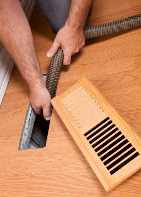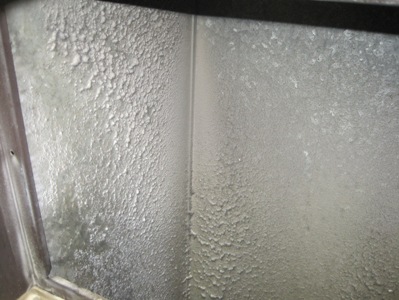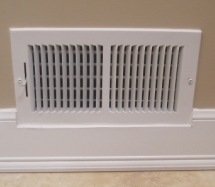Find a Mold Specialist Now
Click or Call, Toll-Free 24/7
Duct Vent Cleaning
Many people have asked us lately about the best method for air duct vent cleaning. They are concerned about the air quality in their homes and want to make sure their air vents are free of allergens, mold and other substances that can lead to health problems. We encourage people to get professional air duct cleaning help because the job can be tougher than it might initially appear.
If air vent cleaning is done incorrectly, it can actually cause mold and other allergens to spread to other areas of the home. In addition, if even trace amounts of these substances are left behind in the air ducts, any related health problems will simply continue to plague you.
Air Duct Cleaning Techniques
When you hire professional air duct cleaning help, you’ll be getting a professional that knows how to use a variety of air duct cleaning techniques and that has all the specialized equipment needed for the job.
Air duct vent cleaning typically involves brushing dust, dirt and debris from the air ducts with manual and/or power-operated brushes. Special equipment is needed to reach all the hard-to-reach places inside home ductwork. Devices called air whips or air skippers are used to drive the dust, dirt and debris toward collection devices. Dust, dirt and debris are typically collected in HEPA (high-efficiency particulate air) filter vacuums, vacuums with special filters that prevent substances from escaping the vacuum and drifting into other areas of the home. A HEPA filter is especially important when cleaning up black mold or other hazardous substances.
Special cleaning techniques must be used for air ducts made of fiber glass duct board or insulated with fiber glass duct liner as the more commonly-used techniques can damage these surfaces.
Professionals generally use negative pressure devices while cleaning air ducts to make sure dust, dirt and other debris are not scattered or spread to other areas of the home during the clean up process. This is important because spreading mold or other allergens throughout the home creates a health hazard.
Sometimes air duct vent cleaning professionals recommend the use of chemical biocides to kill mold or bacteria inside air ducts. The Environmental Protection Agency warns that these should be used with caution. In many cases, harmful bacteria, mold and other fungus can be removed from air ducts without the use of these chemicals and in some cases, these chemicals may actually pose a health risk, especially if anyone residing in the home has chronic health problems. In some instances, though, chemical biocides may be necessary. If the professional you hire recommends their use, be sure to ask about the reason he recommends biocides, possible health risks and alternatives.
Hiring Professional Air Duct Cleaning Help

As you might imagine, hiring professional air duct cleaning help can be costly. The cost varies greatly, though, from professional to professional and from area to area. You might expect to pay anywhere from $400 to $1,000. It’s natural to want to save money and the most expensive professional is not necessarily the best, but make sure you’re getting quality air duct vent cleaning, not just the best bargain available. The benefits are worth the cost.
Look for a professional that operates in accordance with the National Air Duct Cleaners Association guidelines. If the air ducts in your home are made of fiber glass duct board or insulated with fiber glass duct liner, look for a professional that also operates in accordance with the North American Insulation Manufacturers Association guidelines. If your state requires professional air duct cleaning help to be licensed by the state, make sure the professional you hire holds the proper license.
You can follow this link to get a list of qualified Air Duct Cleaning Professionals in your area.
Return From Duct Vent Cleaning To Our Air Duct Cleaning Information Page
Black Mold Health Symptoms Home Page






